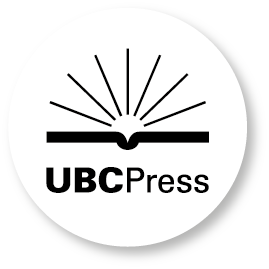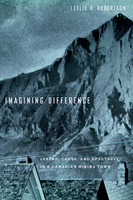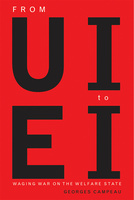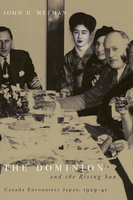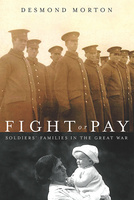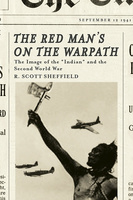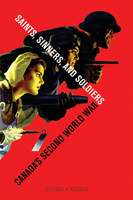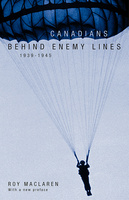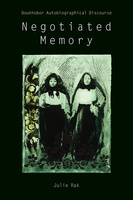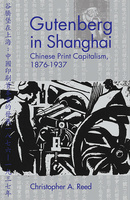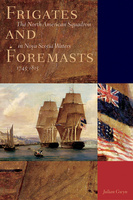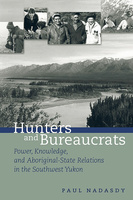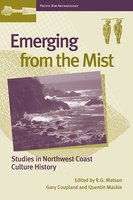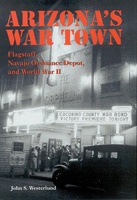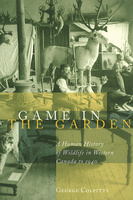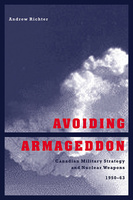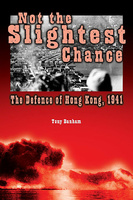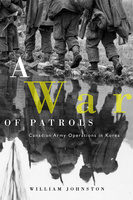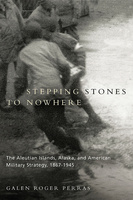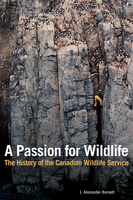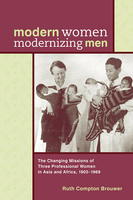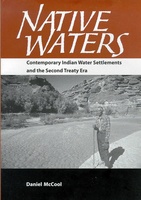First Nations Sacred Sites in Canada's Courts
This book demonstrates how and why courts have failed to fairly treat First Nations sacred sites, which are under increasing threat worldwide due to state appropriation and insatiable demands on natural resources.
The Heiress vs the Establishment
Mrs. Campbell's Campaign for Legal Justice
A rare first-person account of Canada’s early twentieth century legal system, this books retells the Mrs. Campbell fourteen-year-battle with the Ontario legal establishment to claim her mother’s estate.
Imagining Difference
Legend, Curse, and Spectacle in a Canadian Mining Town
An ethnography about historical and contemporary ideas of human difference expressed by residents of Fernie, BC, a coal-mining town transforming into an international ski resort.
Canada and the End of Empire
This collection deals with a neglected subject in post-Confederation Canadian history – the implications to Canada and Canadians of British decolonization and the end of empire.
From UI to EI
Waging War on the Welfare State
From UI to EI examines the history of Canada’s unemployment insurance system and the rights it grants to the unemployed.
CCF Colonialism in Northern Saskatchewan
Battling Parish Priests, Bootleggers, and Fur Sharks
An elegantly written history that documents the colonial relationship between the CCF and the Saskatchewan north.
Selling British Columbia
Tourism and Consumer Culture, 1890-1970
An entertaining and illustrated account of the development of BC's tourist industry between 1890 and 1970, examining how BC’s history of colonialism was deftly marketed to potential tourists.
Fight or Pay
Soldiers' Families in the Great War
In Fight or Pay, Desmond Morton turns his eye to the stories of those who paid in lieu of fighting – the wives, mothers, and families left behind when soldiers went to war.
Miranda
One of the most significant Supreme Court cases in U.S. history has its roots in Arizona and is closely tied to the state's leading legal figures. Miranda has become a household word; now Gary Stuart tells the inside story of this famous case, and with it the legal history of the accused's right to counsel and silence.
Ernesto Miranda was an uneducated Hispanic man arrested in 1963 in connection with a series of sexual assaults, to which he confessed within hours. He was convicted not on the strength of eyewitness testimony or physical evidence but almost entirely because he had incriminated himself without knowing itand without knowing that he didn't have to. Miranda's lawyers, John P. Frank and John F. Flynn, were among the most prominent in the state, and their work soon focused the entire country on the issue of their client's rights. A 1966 Supreme Court decision held that Miranda's rights had been violated and resulted in the now-famous "Miranda warnings." Stuart personally knows many of the figures involved in Miranda, and here he unravels its complex history, revealing how the defense attorneys created the argument brought before the Court and analyzing the competing societal interests involved in the case. He considers Miranda's aftermathnot only the test cases and ongoing political and legal debate but also what happened to Ernesto Miranda. He then updates the story to the Supreme Court's 2000 Dickerson decision upholding Miranda and considers its implications for cases in the wake of 9/11 and the rights of suspected terrorists. Interviews with 24 individuals directly concerned with the decisionlawyers, judges, and police officers, as well as suspects, scholars, and ordinary citizensoffer observations on the case's impact on law enforcement and on the rights of the accused.
Ten years after the decision in the case that bears his name, Ernesto Miranda was murdered in a knife fight at a Phoenix bar, and his suspected killer was "Mirandized" before confessing to the crime. Miranda: The Story of America's Right to Remain Silent considers the legacy of that case and its fate in the twenty-first century as we face new challenges in the criminal justice system.
Northern Exposures
Photographing and Filming the Canadian North, 1920-45
Illustrated throughout with archival photographs, this book examines the photographic and film practice of the Canadian government, the Anglican Church of Canada, and the Hudson’s Bay Company, the three major colonial institutions involved in the arctic and sub-arctic.
The Red Man's on the Warpath
The Image of the "Indian" and the Second World War
This book explores how wartime symbolism and imagery propelled the “Indian problem” onto the national agenda, and why assimilation remained the goal of post-war Canadian Indian policy – even though the war required that it be rationalized in new ways.
“Real” Indians and Others
Mixed-Blood Urban Native Peoples and Indigenous Nationhood
A pioneering look at how mixed-blood urban Native people understand their identities and struggle to survive in a world that often fails to recognize them.
Paddling to Where I Stand
Agnes Alfred, Qwiqwasutinuxw Noblewoman
A first-hand account of the greatest period of change experienced by the Kwakwaka'wakw people since their first contact with Europeans.
Saints, Sinners, and Soldiers
Canada's Second World War
From labour conflicts to the black market to prostitution, this book examines the moral and social underbelly of Canada’s Second World War.
Canadians Behind Enemy Lines, 1939-1945
A history of the activities and lives of undercover Canadian operatives in Europe and Asia during World War II.
Negotiated Memory
Doukhobor Autobiographical Discourse
This demonstrates how the Doukhobors employed both “classic” and alternative forms of autobiography to communicate their views about communal living, vegetarianism, activism, and spiritual life, as well as to pass on traditions to successive generations.
Gutenberg in Shanghai
Chinese Print Capitalism, 1876-1937
Gutenberg in Shanghai demonstrates how Western technology and evolving traditional values resulted in the birth of a unique form of print capitalism whose influence on Chinese culture was far-reaching and irreversible.
The Cult of Happiness
Nianhua, Art, and History in Rural North China
The Cult of Happiness is among the first studies in any field to treat folk art and folk print as historical text. As such, this richly illustrated volume will appeal to a wide range of scholars in Asian studies, history, art history, folklore and print, as well as anyone having a passion for the creativity and culture of rural society.
A Voyage to the North West Side of America
The Journals of James Colnett, 1786-89
The journal of James Colnett is the last unpublished account of the early maritime fur trade on the Northwest Coast.
When Coal Was King
Ladysmith and the Coal-Mining Industry on Vancouver Island
The first scholarly history of the Ladysmith miners, the Great Strike of 1912-1914, and the coalmining industry on Vancouver Island.
Frigates and Foremasts
The North American Squadron in Nova Scotia Waters 1745-1815
A meticulously researched and groundbreaking study of the activities and motivations of the British Navy on North America’s eastern seabord.
The Oriental Question
Consolidating a White Man's Province, 1914-41
Patricia E. Roy continues her study into why British Columbians were historically so opposed to Asian immigration.
Hunters and Bureaucrats
Power, Knowledge, and Aboriginal-State Relations in the Southwest Yukon
A timely anthropological examination of the effect of land claims settlements and co-management of resources on the Kluane First Nation of the Southwest Yukon.
Emerging from the Mist
Studies in Northwest Coast Culture History
This book brings together the most recent research on the culture history and archaeology of a region of longstanding anthropological importance, whose complex societies represent the most prominent examples of hunters and gatherers.
Arizona's War Town
Few American towns went untouched by World War II, even those in remote corners of the country. During that era, the federal government forever changed the lives of many northern Arizona citizens with the construction of the U.S. Army ordnance depot at Bellemont, ten miles west of Flagstaff. John Westerlund now tells how this ...
Tales of Ghosts
First Nations Art in British Columbia, 1922-61
An insightful examination of the complex functions of Northwest Coast art objects produced between 1922 and 1961, and a vital addition to First Nations and Canadian history.
Parties Long Estranged
Canada and Australia in the Twentieth Century
A comparative collection of essays that examine different aspects of Canadian-Australian relations throughout the twentieth century.
Game in the Garden
A Human History of Wildlife in Western Canada to 1940
This intriguing book identifies the imaginative use of wild animals in early western society and shows how attitudes to wild animals changed according to subsistence and economic needs and how wildlife helped to determine social relations among people.
Avoiding Armageddon
Canadian Military Strategy and Nuclear Weapons, 1950-1963
An examination of Canadian military thinking on key issues of the nuclear age, such as deterrence, arms control, strategic stability, air defence, and the domestic acquisition of nuclear weapons.
Not the Slightest Chance
The Defence of Hong Kong, 1941
This book represents the first attempt to piece together all existing accounts of the December 1941 Battle of Hong Kong and the fighting between the Garrison and the invading Japanese.
A War of Patrols
Canadian Army Operations in Korea
Impeccably researched and analytical, this comprehensive account of the Canadian campaign in the Korean War provides the first detailed study of the training, leadership, operations, and tactics of the brigade under each of its three wartime commanders.
Stepping Stones to Nowhere
The Aleutian Islands, Alaska, and American Military Strategy, 1867-1945
Galen Perras shows how that changed with the Japanese occupation of the western Aleutians, which climaxed in the horrendous battle for Attu during the Second World War.
A Passion for Wildlife
The History of the Canadian Wildlife Service
A chronicle of the Canadian Wildlife Service and the evolution of wildlife policy over the first 50 years of this venerable Canadian institution's history.
Women and the White Man's God
Gender and Race in the Canadian Mission Field
Based on diaries, letters, and mission correspondence, this is the first comprehensive examination of women’s roles in Anglican missions that were active in northern British Columbia, Yukon, and the Northwest Territories between 1860 and 1940.
Modern Women Modernizing Men
The Changing Missions of Three Professional Women in Asia and Africa, 1902-69
Explores how professionalism, religion, and feminism came together to enable missionary women to become the colleagues and mentors of Western and non-Western men.
Making Native Space
Colonialism, Resistance, and Reserves in British Columbia
It presents the most comprehensive account available of perhaps the most critical mapping of space ever undertaken in BC – the drawing of the lines that separated the tiny plots of land reserved for Native people from the rest.
Native Waters
Since the beginning of the reservation era, the bitter conflict between Indians and non-Indians over water rights was largely confined to the courtroom. But in the 1980s the federal government began to emphasize negotiated settlements over lawsuits, and the settlements are changing water rights in fundamental waysnot only for tribes but also for non-Indian communities that share scarce water resources with Indians.
In Native Waters, Daniel McCool describes the dramatic impact these settlements are having both on Indian country and on the American West as a whole. Viewing the settlements as a second treaty era, he considers whether they will guarantee the water future of reservationsor, like treaties of old, will require tribes to surrender vast resources in order to retain a small part of their traditional homelands. As one tribal official observed, "It's like your neighbors have been stealing your horses for many years, and now we have to sit down and decide how many of those horses they get to keep." Unlike technical studies of water policy, McCool's book is a readable account that shows us real people attempting to end real disputes that have been going on for decades. He discusses specific water settlements using a combination of approachesfrom personal testimony to traditional social science methodologyto capture the richness, complexity, and human texture of the water rights conflict. By explaining the processes and outcomes in plain language and grounding his presentation in relevant explanations of Indian culture, he conveys the complexity of the settlements for readers from a wide range of disciplines.
Native Waters illustrates how America is coming to grips with an issue that has long been characterized by injustice and conflict, seeking to enhance our understanding of the settlements in the hope that this understanding will lead to better settlements for all parties. As one of the first assessments of a policy that will have a pervasive impact for centuries to come, it shows that how we resolve Indian water claims tells us a great deal about who we are as a nation and how we confront difficult issues involving race, culture, and the environment.
Preserving What Is Valued
Museums, Conservation, and First Nations
What are the “right ways” to preserve heritage? Are the aims and purposes of museums necessarily at odds with those of First Nations? This thoughtful book explores the concept of museum conservation in light of cultural repatriation issues, and helps readers understand the complex relationship between museums and Aboriginal peoples.
